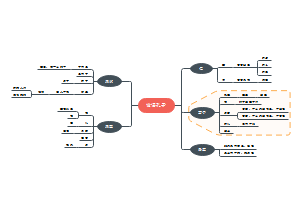导图社区 GROW Coaching Model
- 73
- 0
- 0
- 举报
GROW Coaching Model
GROW模型的关键是帮助我们按照“目标→现状→方案→行动”的顺序,去逐一专注在四个不同方面(就像知行闭环一样),从而把挑战分解成难度较小并可完成的任务。
编辑于2023-06-25 11:45:42 上海- 稀缺ScarcityWhy Having Too Lit
这是一篇关于稀缺ScarcityWhy Having Too Lit的思维导图,当人们面临资源稀缺时,会产生一种特殊的心态。这种心态会改变人们的思维方式,影响人们的认知能力和决策制定。
- AI提示词合集
提示词合集主题有表格提示词范例,本文描述了用户希望与一个多功能AI助手互动,该助手能扮演多种角色,如Linux终端、翻译员、面试官等,并执行相应任务。
- Herzberg’s Two-Factor Theory Of Motivation-Hygiene赫茨伯格的动机双因素理论
Herzberg’s Two-Factor Theory Of Motivation-Hygiene 赫茨伯格的动机双因素理论 美国心理学家赫茨伯格1959年提出。他把企业中有关因素分为两种,即满意因素和不满意因素。满意因素是指可以使人得到满足和激励的因素。不满意因素是指容易产生意见和消极行为的因素,即保健因素。他认为这两种因素是影响员工绩效的主要因素。保健因素的内容包括公司的政策与管理、监督、工资、同事关系和工作条件等。这些因素都是工作以外的因素,如果满足这些因素,能消除不满情绪,维持原有的工作效率,但不能激励人们更积极的行为。激励因素与工作本身或工作内容有关,包括成就、赞赏、工作本身的意义及挑战性、责任感、晋升、发展等。这些因素如果得到满足,可以使人产生很大的激励,若得不到满足,也不会像保健因素那样产生不满情绪
GROW Coaching Model
社区模板帮助中心,点此进入>>
- 稀缺ScarcityWhy Having Too Lit
这是一篇关于稀缺ScarcityWhy Having Too Lit的思维导图,当人们面临资源稀缺时,会产生一种特殊的心态。这种心态会改变人们的思维方式,影响人们的认知能力和决策制定。
- AI提示词合集
提示词合集主题有表格提示词范例,本文描述了用户希望与一个多功能AI助手互动,该助手能扮演多种角色,如Linux终端、翻译员、面试官等,并执行相应任务。
- Herzberg’s Two-Factor Theory Of Motivation-Hygiene赫茨伯格的动机双因素理论
Herzberg’s Two-Factor Theory Of Motivation-Hygiene 赫茨伯格的动机双因素理论 美国心理学家赫茨伯格1959年提出。他把企业中有关因素分为两种,即满意因素和不满意因素。满意因素是指可以使人得到满足和激励的因素。不满意因素是指容易产生意见和消极行为的因素,即保健因素。他认为这两种因素是影响员工绩效的主要因素。保健因素的内容包括公司的政策与管理、监督、工资、同事关系和工作条件等。这些因素都是工作以外的因素,如果满足这些因素,能消除不满情绪,维持原有的工作效率,但不能激励人们更积极的行为。激励因素与工作本身或工作内容有关,包括成就、赞赏、工作本身的意义及挑战性、责任感、晋升、发展等。这些因素如果得到满足,可以使人产生很大的激励,若得不到满足,也不会像保健因素那样产生不满情绪
- 相似推荐
- 大纲
GROW
Goals
The Goal section of GROW is addressed at the beginning of each session and referred to again from time to time to keep the focus moving forward, especially if the coachee becomes stuck. It raises energy and clarifies thinking. Identifying what we want to achieve puts us on the path to accomplishing it by focusing on the solution rather than the problem.
1. What would you like to focus on today?
2. What’s important to you at the moment?
3. What does your ideal future look like?
4. What will you be doing in five years?
5. What new skills do you want to learn or develop?
6. Where is your life out of balance?
7. What challenges are you facing at the moment?
8. What would make you feel that this time has been well spent?
9. What are you currently working toward?
10. How can you word your goal in positive language?
Reality
This is an exploration of the coachee’s world at the moment. Time spent here helps people get clear about what is happening and how it affects themselves and others. It provides an opportunity for viewing issues from different perspectives.
1. What is working well at the moment?
2. What do you need?
3. What excuses have you always used for not achieving your goals?
4. What have you done so far to improve things?
5. What parts of your life will be impacted by you achieving your goal?
6. What is the biggest obstacle you are currently facing?
7. What does self-sabotage look like for you?
8. What is your inner critic saying to you?
9. What fears are present?
10. What are you passionate about?
Options
Coachees will move naturally towards the Options stage as their Reality becomes clearer. Often they show a new energy by sitting up and smiling, or a lighter tone of voice.
1. What is your first step?
2. If you had 50% more confidence, what would you be doing that would be different?
3. If success was guaranteed, what would you do?
4. If money was not an obstacle, what would you do?
5. What action step is the best use of your time at this moment?
6. If someone else came to you with your obstacle, what would you tell them?
7. What strengths can you use to move forward?
8. If you could do only one thing this week, what would it be?
9. What would you do if you answered to no one?
10. What is the most efficient use of your time in this moment?
Will/Way Forward
As opposed to ‘Options’, which brings to light all possibilities, ‘Will’ is about discovering which actions the coachee can commit to undertaking. When asked, ‘What will you do about this?’ there is a danger that the coachee will make a list of what they think they should do, rather than choosing a pathway which suits their talents and ways of behaviour. The classic example is where a man commits to joining a gym because he wants to lose weight. However, if he is never going to attend because he hates going to the gym, he would get more benefit from committing to walk his dog every morning, if that is something he would enjoy.
1. On a scale of 1 to 10, how motivated are you to achieve your goal?
2. What will it take to get that motivation closer to a 10?
3. Whatever your first step is, can you think of anything that might stop you from doing it?
4. How committed are you to achieving this goal?
5. How do you want to be held accountable for this goal?
6. How will you celebrate when you’ve achieved your goal?
7. What are you going to do in the next 24 hours?
8. What will you do when you’ve achieved your goal?
9. Who do you need to include in your journey to that goal?
10. What else do you need to consider before starting?









